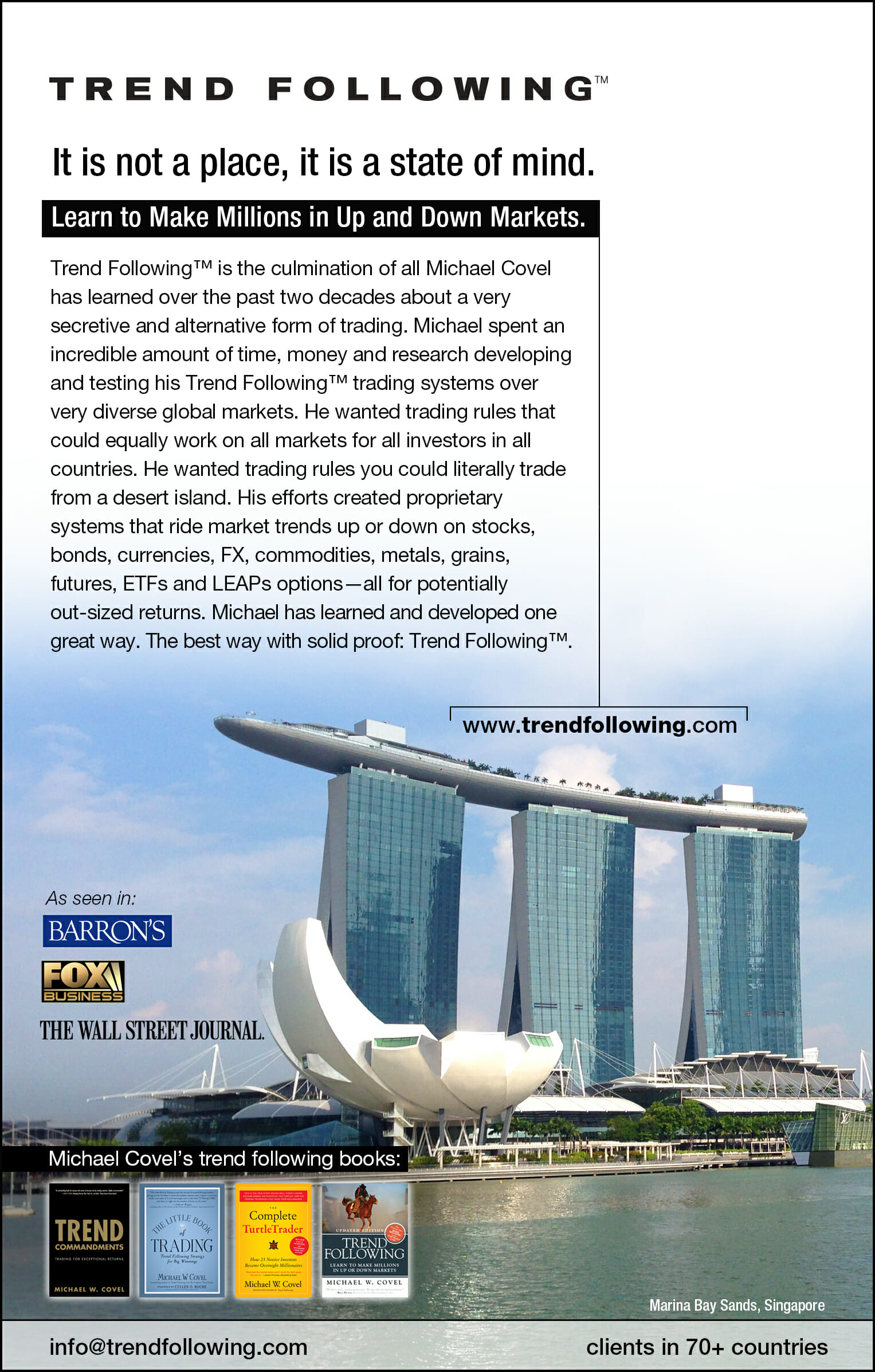TurtleTrader® comment: Icebergs, Titantic and trend following are related? Bright men like Kent Osband have recently injected insight into the “risk” debate that all traders should ponder:
The single most widely used measure of financial risk is the volatility, or annualized standard deviation. It’s an attractive measure because the volatility of a portfolio depends only on the volatilities of the individual assets, their weights, and their correlations…[But] every time the normal distribution is used for portfolio analysis even when the constituent assets are clearly non-normal, the implicit answer is “yes, the approximation is relatively good”. Indeed, the implicit answer is “yes” virtually any time an analyst gauges portfolio risks simply by the mean and volatility, for with most other distributions the mean and volatility would not suffice to characterize risks.
TurtleTrader® comment: Bottom line? Know your risk and we don’t mean standard deviation!
Even in large portfolios, high standard-deviation events tend to occur far more often than a normal distribution suggests. This seems especially true on the downside, which will call this variable excess risk “iceberg risk”, because it is mostly hidden from view but threatens major damage. It might also be called “Noah risk”, after the proverbial flood that drowned the world…Also, in the Biblical story, the world was amply warned about the flood but refused to listen. In contrast, icebergs reflect a type of risk that people look for but may not see.
TurtleTrader® comment: From the get go you must be prepared for risks you can’t see until they happen. When they hit — you have a plan.
How I envied my colleagues specializing in Latin America. Compared with the post-Soviet bloc, a country like Mexico had much better data, a much more stable and experienced political regime, and a much longer relevant debt-servicing record. Based on extensive consultations with the IMF, with major investors, and with Mexican government officials, my guru colleagues confidently predicted the Mexican peso would hold to its announced exchange rate band against the US dollar. They were right too. They were right down to the date that they were proved dead wrong. The Mexican iceberg was a revelation for me. Wow, I thought, some of these gurus are just as ignorant as me. More productively, I realized that the markets I specialized in were bound to move largely on perceptions and changes in perceptions, with only occasional wake-up calls from reality. Ever since, I have focused on better understanding the role of ignorance in financial markets, both from a theoretical and a practical perspective. Call it an odyssey in ignorance.
TurtleTrader® comment: Osband is driving right toward trend followers. Trend followers seem to be the true exception on Wall Street. They are cognizant of “iceberg” and “Noah” risk everyday. If you know that markets “move largely on perceptions and changes in perceptions, with only occasional wake-up calls from reality” — then what other strategy choice beyond trend following exists?
Trend Following Products
Review trend following systems and training:

More info here.
